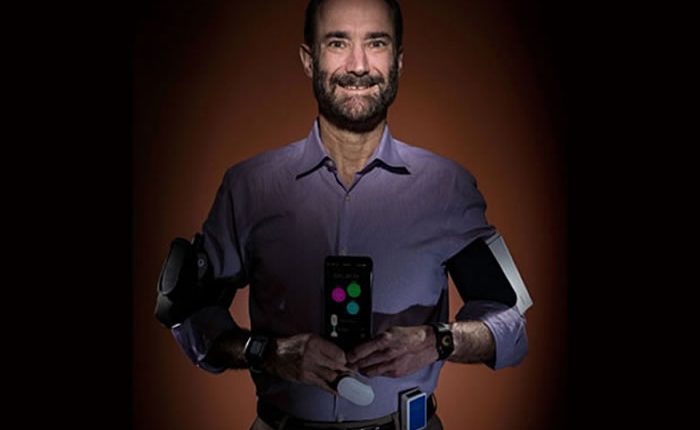Do you have Lyme disease? Your wearable can tell you
Whilst flying to Norway for a family vacation last year, Stanford Professor Michael Snyder was wearing a Basis smart watch, a RadTarge radiation monitor, and iHealth, Scanadu, and Masimo oximeters. He was also using the MOVES app on his smart phone.
Altogether, this gear collects data on heart rate, blood oxygen, skin temperature, and activity, including sleep; steps; walking, biking, and running; calories expended; acceleration; and exposure to gamma rays and X-rays.
Snyder hadn’t loaded up on wearables just for this flight; he wore this gear regularly for two years as part of a study of 60 people, and frequently calibrated it with more standard medical tests. The goal? Try to figure out just how useful wearables can be in early disease diagnosis. The results of that study were published last week.
But there was something different about that plane ride. Snyder noticed that his oxygen levels – which he’d previously realized dropped during an airplane flight but returned quickly after landing – didn’t return to his baseline as expected.
Then he noticed his heart rate, which usually increased at the beginning of a flight but again quickly returned to baseline, didn’t come down as it normally would. Something was not right.
Snyder considered what, if anything, he’d been doing differently. Two weeks earlier, he’d been building a fence in rural Massachusetts – could he have been bitten by a tick and contracted Lyme disease? After his wearables also started recording a fever, he was able to convince a local doctor to treat him with antibiotics. Later blood tests for Lyme disease proved his hunch had been correct.
High-tech health expert Eric Topol, Professor of Genomics at the Scripps Research Institute, in a statement said: “The fact that you can pick up infections by monitoring before they happen is very provocative.”
It turns out, as noted by Snyder and the other researchers who worked on the study, that Lyme disease triggers particularly strong changes in heart rate, so was easy to detect.
The team suggested that wearables can identify insulin resistance, a precursor for Type 2 diabetes, using an algorithm that examines steps and differences between daytime and nighttime heart rates. Researchers also attribute the fatigue experienced by air travelers to a drop in blood oxygen that comes with flying – it’s likely why so many people doze during flight. Interestingly, they noted that during long flights oxygen levels improve as the body adjusts.
Are we really all going to strap on multiple gadgets, and wear them all the time?
Snyder said that’s not really necessary, the Basis smart watch and the iHealth oximeter pretty much did the job. Oxygen sensors will likely migrate into wrist wearables. And then, with the proper algorithms, your smart watch could just alert you with a light or buzzer when it detects something off, like a prolonged elevated heart rate while you’re inactive. With an early warning of incoming illness you might be inclined rest a little more, or take various supplements intended to help you fight off viruses.
The researchers noted in their report that: “It is possible that the use of wearables will lead to false alarms and over diagnosis of disease. The number of false alarms will depend upon the threshold that is set, which can be personalized.”
“Overall, we envision that these devices could be particularly powerful for individuals who are responsible for the health of others (parents and caregivers), and perhaps also for those who have historically limited health care access, including groups with low income and/or remote geography.”
More information: IEEE Spectrum


